Robert F. Lehman
Era: World War II
Military Branch: Marines
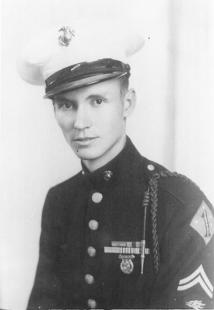
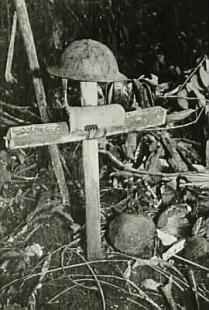
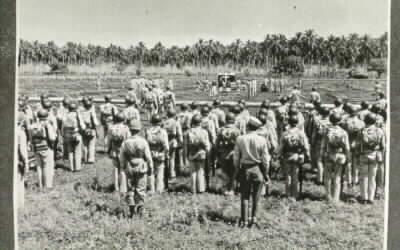
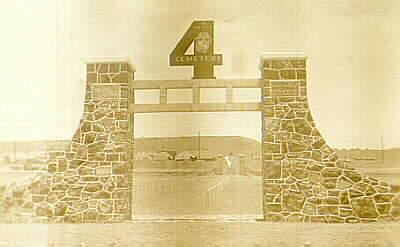
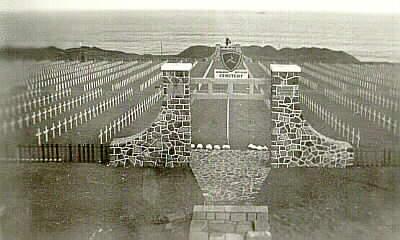
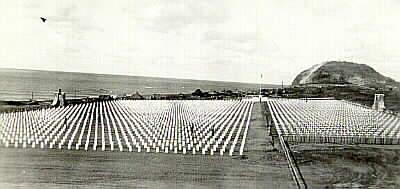
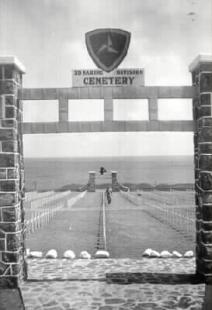
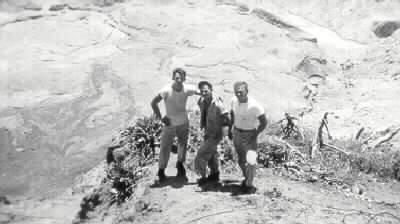
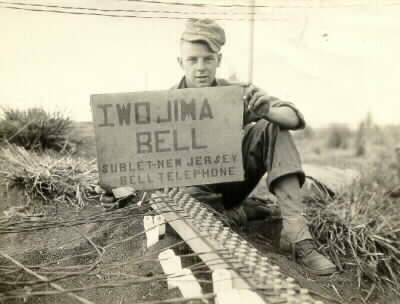
Portrait of Mr. Lehman. All other photos were taken by Mr. Lehman in Iwo Jima and Guadalcanal.
Mr. Lehman served in World War II in the Pacific Theater.
Mr. Lehman was in the U.S. Marine Corps. He was inducted on April 8, 1942 and was discharged on November 23, 1945. He was trained at the Recruit Training and Radio School in San Diego, California. He served in the 1st Marine Division, 5th Battalion, 1st Signal Company on Guadalcanal. He was a Radio Operator. His rank was Private 1st Class.
Mr. Lehman was in the second group of Marines to land at Guadalcanal, bringing provisions for the original invasion force. They were under fire for 121 days. He was there four-and-a-half months.
From his position on a hilltop, Mr. Lehman could see Japanese service members unloading supplies. The Marines were unable to do anything about it, owing to lack of equipment and airplanes.
The 5th Battalion was awarded a French decoration for bravery.
Mr. Lehman returned to the United States in June 1943 suffering from malaria. In September 1943, he was assigned to the Field Artillery School in Quantico, Virginia. He returned to the Pacific on September 4, 1944, and landed on the beaches of Iwo Jima on February 14, 1945, with the 5th Marine Division. He was at the bottom of Mount Suribachi during the original planting of the American flag. He was in the Pacific until March 27, 1945.
Mr. Lehman was born on August 29, 1921. He graduated from Cloquet High School in 1938.
Mr. Lehman died on October 2, 1998.
Source: Account provided by family member (see below); “Contact,” a local newsletter “published for the men and women in service by the Wood Conversion Company,” Vol. 1, No. 3; interview with Veterans’ Memorial Hall staff
---
I am writing on behalf of my father, Robert F. Lehman, who died October 2, 1998. “Bob” was a man who said little about WWII, what he saw, or what he did during those 41 months between April 1942 and November 1945. I’ve pieced a few things together using a scrapbook my grandmother compiled during the first half of Dad’s duty, comments Dad made during my youth, along with documents and other artifacts I’ve discovered since his death. In many ways, Dad’s story is my grandmother’s story as well since their activities during Dad’s days of active duty became intertwined in a special kind of way despite being thousands of miles apart.
On April 8, 1942, at age 21, Robert F. Lehman was sent to Recruit Training and Radio School in San Diego, CA. His father had gone to Greenland the previous fall on a two-year government project that would last three years due to our involvement in the war. His brother had recently married, so his mother and sister were now home alone.
By November 12, 1942, Dad was part of the 1st Marine Division, 1st Signal Co. on Guadalcanal. He was with the second group of Marines to land, bringing food and supplies for the original invasion force. They were under fire for a total of 121 days. Dad’s 5th Battalion received a French decoration for bravery—reported to be the only Marines to receive this award. R&R was then given to Dad’s group with Australia and New Zealand the destinations. Dad’s specific location during this period was usually a mystery to his family. My grandmother knew he was in the Pacific so she would read and clip out stories and photos from local newspapers about the places her son might be. It was neighbors who recognized him in a Chicago newspaper photo loading wounded men onto a plane in New Guinea.
Malaria sent Dad back to the states in June of 1943. His sister, Betty Mostrom, talks about how ill my dad was at that time. He lost much weight and sleep was elusive. Dad and Betty would walk the neighborhoods of Cloquet in the middle of the night “walking off” the effects of malaria and war.
By September 10, 1943, Dad was on his way again; this time to the Field Artillery School in Quantico, Virginia. He returned to the Pacific September 4, 1944, and landed on the beaches of Iwo Jima February 14, 1945 with the 5th Marine Division. Dad was at the bottom of Mount Suribachi during the original planting of the American flag. If you questioned him about those specific days, he would only say that one day blurred into another and you did what you had to do. His official discharge papers indicate he was there until March 27, 1945. He also thought it was interesting a navy corpsman was among the six flag raisers.
Not only was Dad a radio operator, he took photographs as well. Little did he know some of his photos would end up in the pages of his local newspaper. And little did my grandmother know she was cutting and pasting her own son’s photos in a scrapbook to help chronicle the action in the Pacific; a far away place where her son was hopefully still alive. Imagine her amazement when Dad returned home with a stack of photos that matched her book! The biggest surprise was probably a newspaper caption under one impressive photo, indicating the soldier/photographer had been killed! So much for accuracy during war . . .
Dad took pride in being a part of the Marine family in WWII history. Although he rarely talked or dwelled on the events he experienced, our family sensed the impact it made on how he looked at life. He had a deep appreciation for how movies depicted war. He often watched “Midway,” “Bridge over the River Kwai” as well as the weekly television series “Combat.” But he was also able to enjoy the humor of other war places and time with the comedies of “Hogan’s Heroes” and “M.A.S.H.” I suppose those were opportunities to work through his own experiences he chose not to share with his family.

